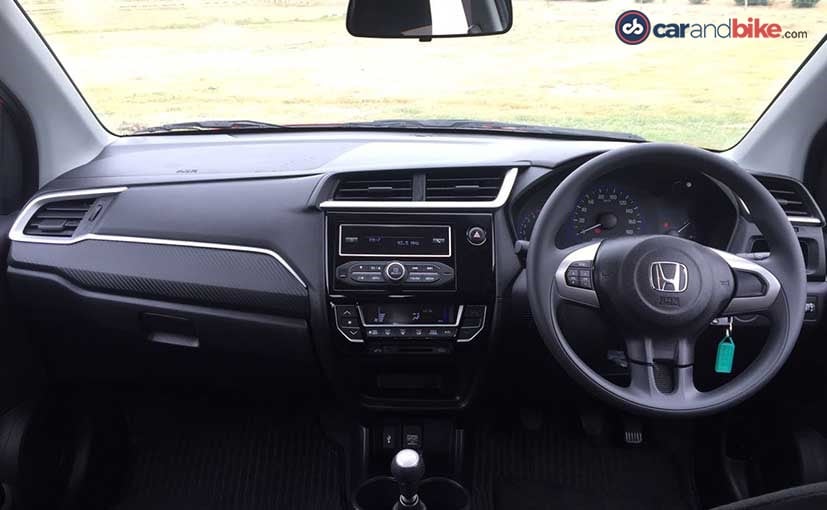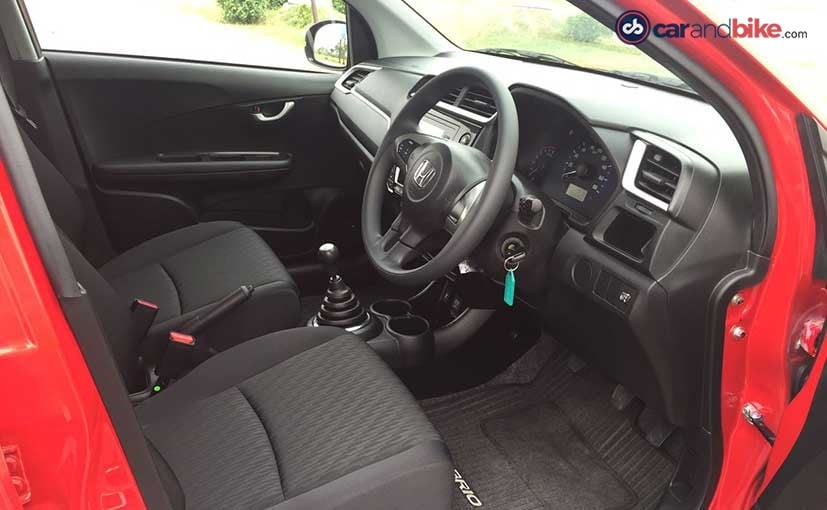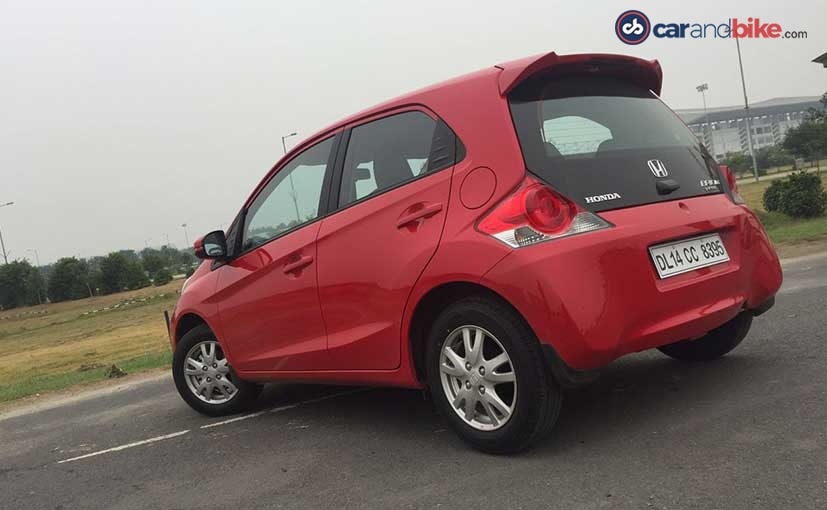2016 Honda Brio Facelift Review

Highlights
Five years is a long time for any car's life cycle but Honda has finally showered some much needed attention on its entry level offering - the Brio hatchback. That said, just like the Amaze before it, the updates on the Brio on the exterior front are quite negligible with most of Honda's attention focused towards making the interior a much nicer place to be. So, let us take you through what is new and what isn't.
On the exterior, the updates to the Brio are subtle but it does make a slightly sportier statement - especially in a color like the red we have here. The bumper gets a very subtle bulge on either side to accentuate the new lower grille and fog lamp housing. Chrome has been given a miss (thankfully) on the Brio and instead you get a nice gloss black single slat central grille joining the updated headlamps. As expected, a set of daytime running lights have been given the miss although we think it would have really helped give the Brio that 'new' look.

Move to the rear and you get a nicer and much larger roof/tailgate mounted spoiler and a slightly updated set of tail lamps that accentuate the Brio trademark round lighting design. A new and larger set of wheels (or even these same wheels painted dark grey or black) would have really gone a long way to tie in the new grille and the sporty pretensions but Honda has left that as is - a little disappointing.
As we mentioned earlier, just like the Amaze, the real difference between the old Brio and the updated one is in the interior. For starters, the dashboard is brand new, essentially the same one you get on the BR-V and looks much much better than what the Brio had earlier. The circular AC vents have all been replaced by a set of sleek rectangular ones that are flanked by brushed aluminium inserts. The brushed aluminium theme continues on the steering wheel and on the rest of the dashboard too and offsets well with the gloss black infotainment surround.

New Honda Brio Cabin
One of our favourite design elements also has to be the faux carbonfibre pattern on the dashboard, which when combined with the black upholstery on the top of the line version really tends to stand out. The other variants of the Brio continue to get beige interiors and we guess will continue to be more popular to the normal car buying Indian individual. Honda has improved the fabrics on the seats though and now you do get a material that breathes a lot better than before.
The infotainment system too has been lifted directly form the BR-V. Although really clean in terms of overall design, Honda should have considered (atleast on the top of the line car) to offer a touchscreen infotainment system with features like navigation and Apple CarPlay/Andriod Auto. The fact that the Brio doesn't have these while cars that are much cheaper do, is in by itself a disappointing fact. You do however get Bluetooth with telephone connectivity, steering mounted controls and climate control.

Honda Brio Infotainment System
We expected Honda to plonk in the 1.5-litre i-DTEC diesel engine into the Brio but that hasn't happened either. The car continues to get the 1.2-litre i-VTEC petrol engine making 88bhp of peak power and 109Nm of peak torque. Although the Brio isn't the kind of car that will wow you with outright performance, there is one thing it manages to do rather well - drive around in urban conditions with minimal noise, vibrations and effort. In fact, the Brio could very well be one of the quietest and more effort-free cars in terms of an overall user experience. That said, when you need to it get going with a gusto and some vigour, the tall gearing and the lack of top-end power does want you longing for more. The car we drove was the 5-speed manual but if you like us are used to getting stuck in a traffic jam for over an hour a day, the 5-speed automatic would be an ever more sensible option.

The Brio's easy to use nature also translates to a comfortable ride quality both up front and in the rear. The car isn't as precise when it comes to handling but then it doesn't wallow about like a sand barge either. That said, it still can and will out handle almost everything else in its category while managing to feel as stable as a rock even at well over triple digit speeds. In the city, this setup actually makes it a dawdle to drive on your daily commute to and fro from work.

Honda Brio Rear
After five years in the country, what the Brio really needed was a brand new design, top-of-the-line tech and a diesel engine. Honda sadly has done none of that. The Brio continues to be a relatively cute and likable car, but on the flip side, as of today, there are cars that offer a lot more for less money.










